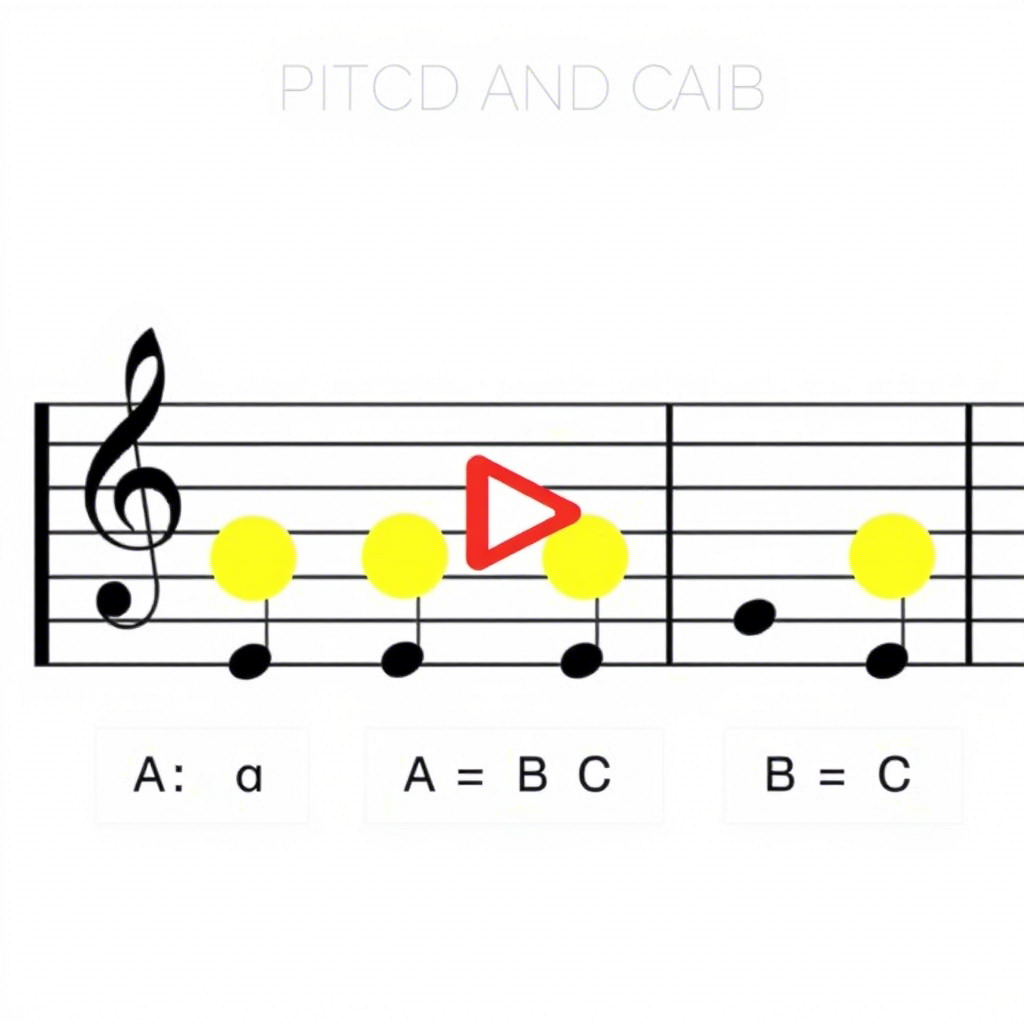Introduction
Pitch and Pitch Notation
Understanding pitch and pitch notation is fundamental to excelling in AP Music Theory. This guide will break down the essential concepts, including how pitches are named, how they are represented on the staff, and the role of accidentals and clefs in notation. By mastering these topics, you’ll develop a strong foundation for advanced musical concepts.
What is Pitch?
Pitch refers to the perceived highness or lowness of a sound. It is determined by the frequency of vibrations, measured in Hertz (Hz). Higher frequencies produce higher pitches, while lower frequencies produce lower pitches.
How Pitch is Notated
In Western music, pitch is represented on a five-line staff using note heads placed on lines and spaces. The vertical placement of a note on the staff determines its pitch.
The Staff and Clefs
The staff consists of five horizontal lines and four spaces. Clefs assign specific pitches to the lines and spaces, ensuring that musicians can correctly interpret the notes.
Common Clefs in AP Music Theory
- Treble Clef (G Clef) – Used for higher-pitched instruments like the violin, flute, and right-hand piano notes.
- Bass Clef (F Clef) – Used for lower-pitched instruments like the cello, bass guitar, and left-hand piano notes.
- Alto Clef (C Clef) – Used primarily for the viola.
- Tenor Clef (C Clef) – Used for higher-range cello and trombone parts.
Note Names and Octave Identification
The musical alphabet consists of seven letter names: A, B, C, D, E, F, and G. These notes repeat in cycles, spanning multiple octaves.
Scientific Pitch Notation
Octaves are labeled with numbers to avoid confusion. For example:
- Middle C is written as C4.
- The A above middle C (A440 Hz) is written as A4.
Accidentals: Sharps, Flats, and Naturals
Accidentals modify a note’s pitch:
- Sharp (#): Raises a pitch by a half step.
- Flat (b): Lowers a pitch by a half step.
- Natural (♮): Cancels a previous accidental.
Accidentals apply to all repetitions of the note within a measure unless canceled by another accidental.
Ledger Lines: Extending the Staff
Ledger lines extend the staff for notes that are too high or too low to be notated within the five-line system. These small lines appear above or below the staff.
Enharmonic Equivalents
Enharmonic notes are pitches that sound the same but are written differently. For example:
- C# and Db
- F# and Gb
Understanding enharmonic equivalence is crucial for key signature interpretation and modulation.
Conclusion
Pitch and pitch notation are essential topics in AP Music Theory. Mastering clefs, accidentals, note names, and scientific pitch notation will significantly enhance your ability to read and understand musical scores. Keep practicing with exercises and real musical excerpts to reinforce these concepts.
Tags: #APMusicTheory #PitchNotation #MusicEducation #MusicTheory #Clefs #Accidentals #Enharmonic #MusicStudents
Study AP Music

